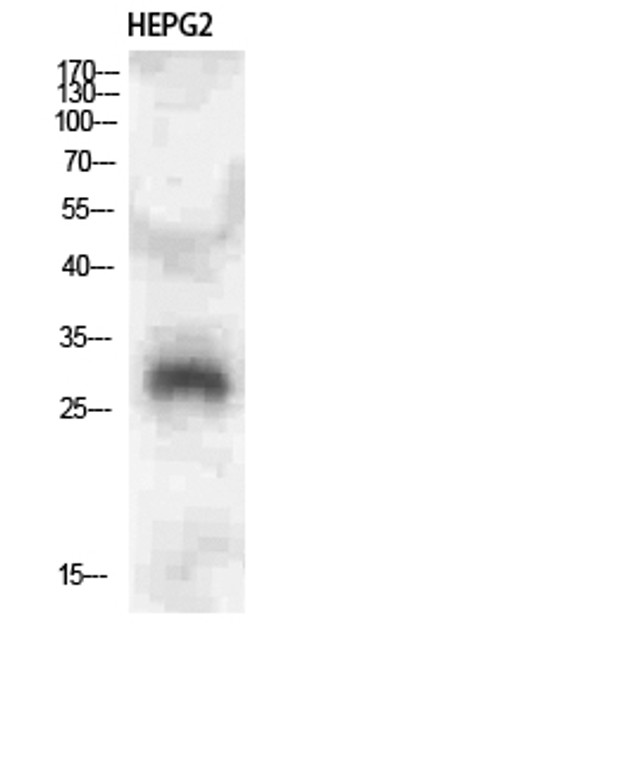| Host: |
Rabbit |
| Applications: |
WB/ELISA |
| Reactivity: |
Human/Rat/Mouse |
| Note: |
STRICTLY FOR FURTHER SCIENTIFIC RESEARCH USE ONLY (RUO). MUST NOT TO BE USED IN DIAGNOSTIC OR THERAPEUTIC APPLICATIONS. |
| Short Description: |
Rabbit polyclonal antibody anti-C-type lectin domain family 4 member A (161-210 aa) is suitable for use in Western Blot and ELISA research applications. |
| Clonality: |
Polyclonal |
| Conjugation: |
Unconjugated |
| Isotype: |
IgG |
| Formulation: |
Liquid in PBS containing 50% Glycerol, 0.5% BSA and 0.02% Sodium Azide. |
| Purification: |
The antibody was affinity-purified from rabbit antiserum by affinity-chromatography using epitope-specific immunogen. |
| Concentration: |
1 mg/mL |
| Dilution Range: |
WB 1:500-2000ELISA 1:10000-20000 |
| Storage Instruction: |
Store at-20°C for up to 1 year from the date of receipt, and avoid repeat freeze-thaw cycles. |
| Gene Symbol: |
CLEC4A |
| Gene ID: |
50856 |
| Uniprot ID: |
CLC4A_HUMAN |
| Immunogen Region: |
161-210 aa |
| Specificity: |
CLECSF6 Polyclonal Antibody detects endogenous levels of CLECSF6 |
| Immunogen: |
The antiserum was produced against synthesized peptide derived from the C-terminal region of human CLEC4A at the amino acid range 161-210 |
| Function | C-type lectin receptor that binds carbohydrates mannose and fucose but also weakly interacts with N-acetylglucosamine (GlcNAc) in a Ca(2+)-dependent manner. Involved in regulating immune reactivity. Once triggered by antigen, it is internalized by clathrin-dependent endocytosis and delivers its antigenic cargo into the antigen presentation pathway resulting in cross-priming of CD8(+) T cells. This cross-presentation and cross-priming are enhanced by TLR7 and TLR8 agonists with increased expansion of the CD8(+) T cells, high production of IFNG and TNF with reduced levels of IL4, IL5 and IL13. In plasmacytoid dendritic cells, inhibits TLR9-mediated IFNA and TNF production. May be involved via its ITIM motif (immunoreceptor tyrosine-based inhibitory motifs) in the inhibition of B-cell-receptor-mediated calcium mobilization and protein tyrosine phosphorylation. (Microbial infection) Involved in the interaction between HIV-1 virus and dendritic cells. Enhances HIV-1 binding/entry and virus infection. Requires ITIM motif-associated signal transduction pathway involving phosphatases PTPN6 and PTPN11, SYK, Src kinases and MAP kinases. |
| Protein Name | C-Type Lectin Domain Family 4 Member AC-Type Lectin Ddb27C-Type Lectin Superfamily Member 6Dendritic Cell ImmunoreceptorLectin-Like ImmunoreceptorCd Antigen Cd367 |
| Database Links | Reactome: R-HSA-5621480 |
| Cellular Localisation | Cell MembraneSingle-Pass Type Ii Membrane ProteinExtracellular Side |
| Alternative Antibody Names | Anti-C-Type Lectin Domain Family 4 Member A antibodyAnti-C-Type Lectin Ddb27 antibodyAnti-C-Type Lectin Superfamily Member 6 antibodyAnti-Dendritic Cell Immunoreceptor antibodyAnti-Lectin-Like Immunoreceptor antibodyAnti-Cd Antigen Cd367 antibodyAnti-CLEC4A antibodyAnti-CLECSF6 antibodyAnti-DCIR antibodyAnti-LLIR antibodyAnti-HDCGC13P antibody |
Information sourced from Uniprot.org
12 months for antibodies. 6 months for ELISA Kits. Please see website T&Cs for further guidance











